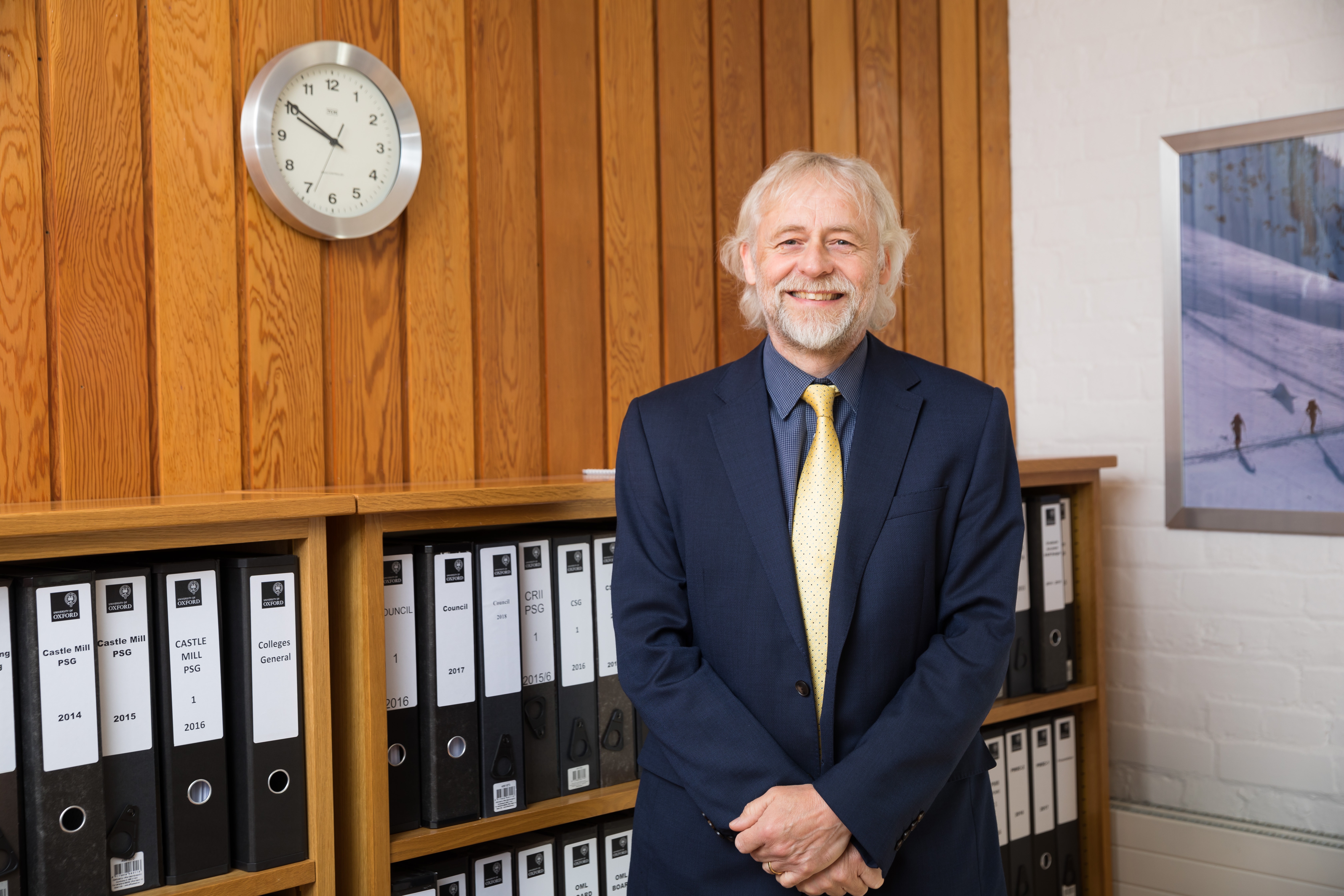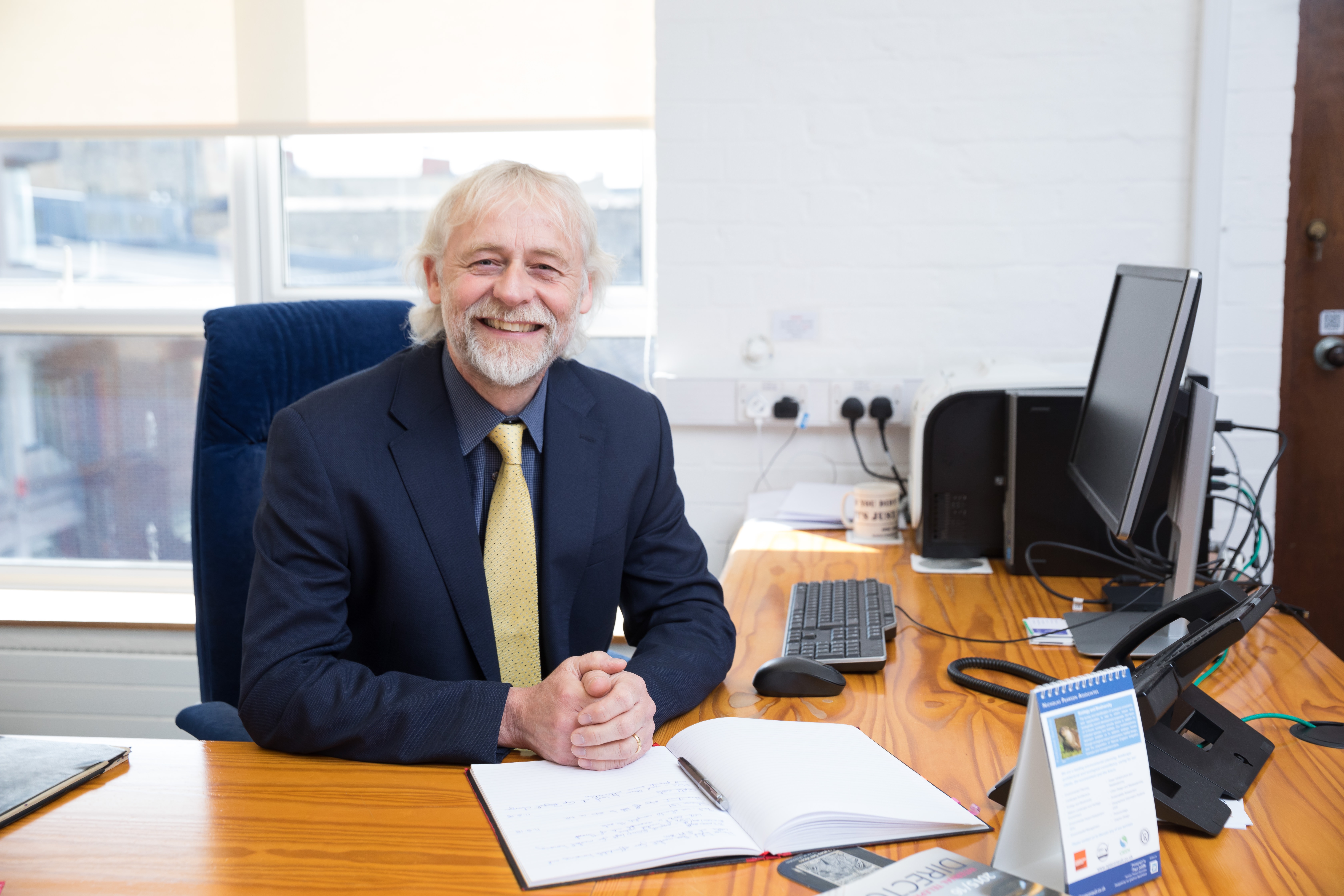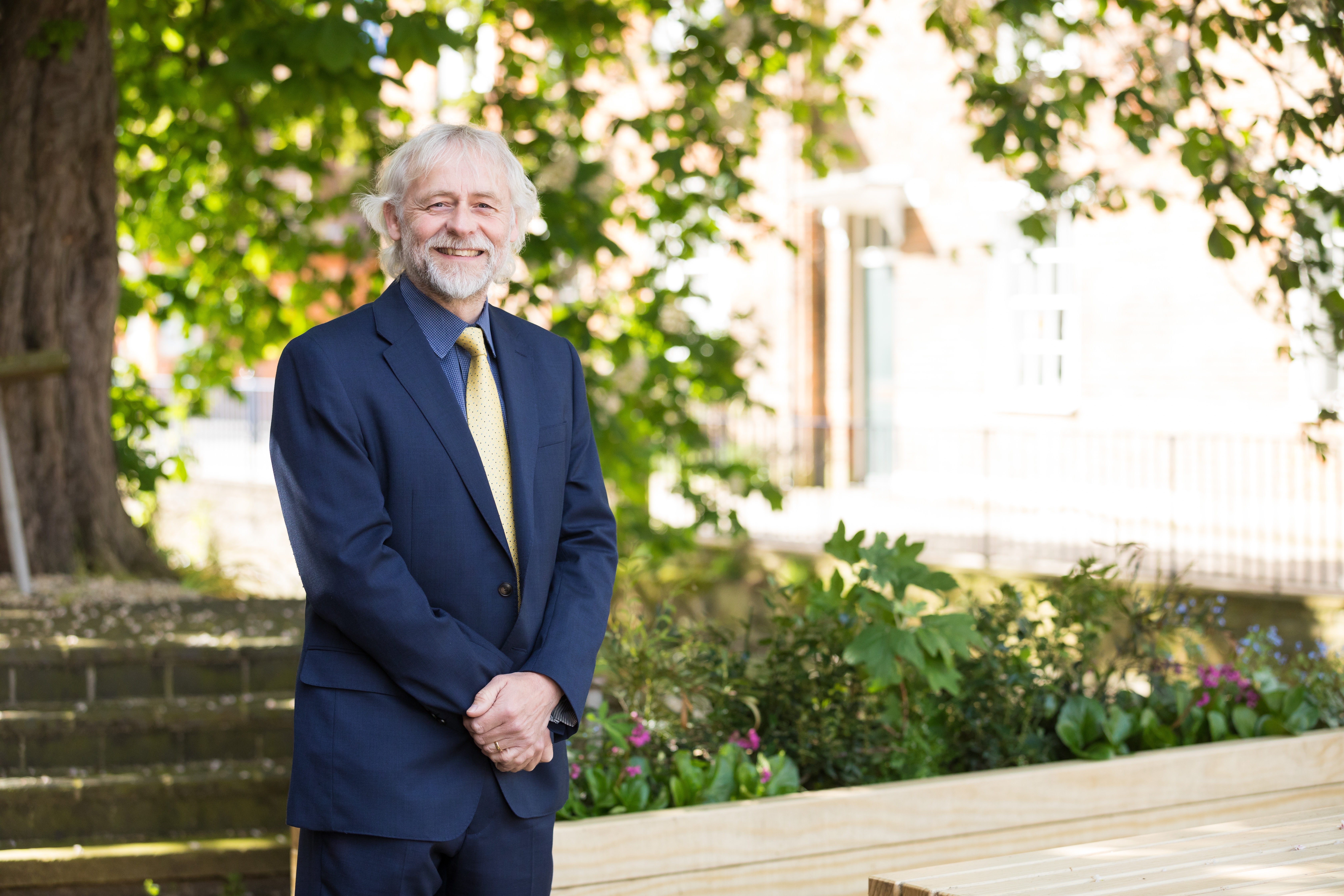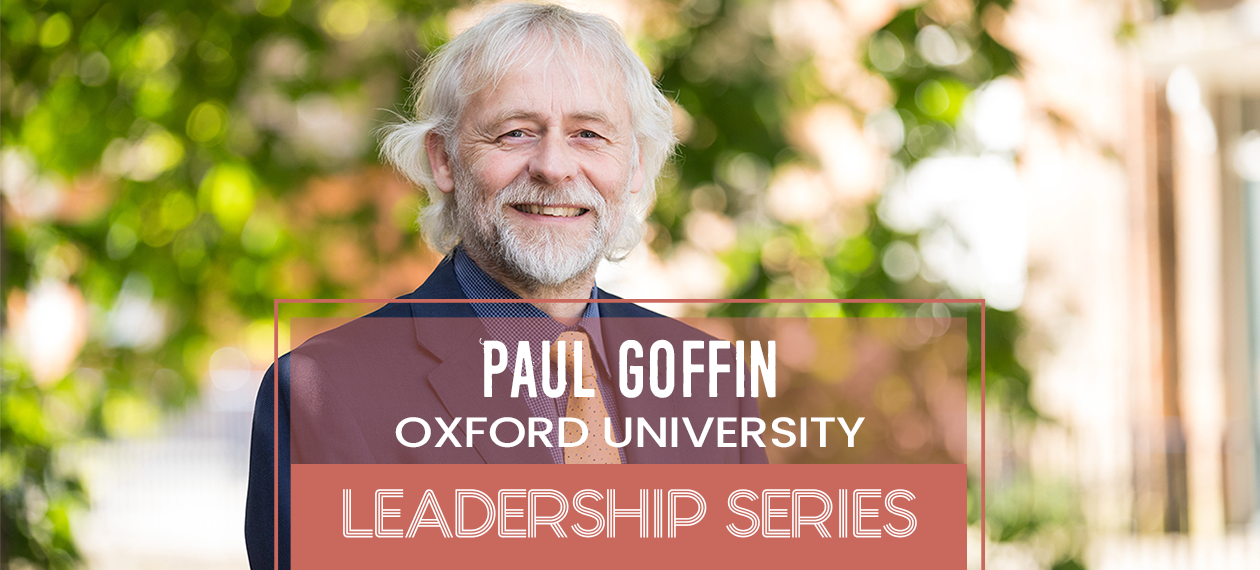Oxford University’s Paul Goffin doesn’t want to hear your gripes about aging infrastructure: As Director of Estates at the second-oldest university in continuous operation, he oversees buildings that go back to 1424!
Joking aside, our conversation with Goffin revealed that facilities leaders in the UK share many of the same pressing challenges as their US counterparts. Goffin, who spent 10 years in the Estates team at the University of Leicester and also worked in both private practice and the public sector, currently manages Oxford’s estate within Oxfordshire.
We enjoyed a candid discussion with Goffin on what’s new at Oxford, the evolution of the facilities management workforce, the future of higher education, and beyond...
What are you working on at Oxford that you're most excited about?
We have a fairly major capital program at the moment. The university has taken out a significant financial bond borrowing £750million, and we are reinvesting that back into the academic estate, which is quite exciting to help us ensure we’re fit for 21st century learning and the research we carry on.
We are also looking at a planning and housing strategy and working with developers to build staff and post-grad accommodation. These are some very exciting developments in the next few years...it’s never not busy!
What's the greatest challenge you face on a daily basis?
My greatest challenge is the scarcity of time. I spend a lot of time dealing with governance activities, which means a lot of meetings--sometimes 30-35 hours a week. The challenge is making sure I have the opportunity for clear, strategic thinking and to lead and manage our team to move forward despite the time constraints.
How do you maintain the right balance between preservation and modernization of facilities at one of oldest universities in the world?
A quarter of our estate is listed, which means it’s protected from a conservation point of view. That has its own challenges around legislative compliance because it limits changes that we can make as far as modernization. However, we actually face more challenges with the buildings from the 1960s and 70s rather than our most historical ones. These structures are quite inflexible and difficult to adapt, and come with all kinds of issues from poor concrete to asbestos.
We’re fortunate to have a lot of good data on the condition of our estate and what we call fitness for purpose functional suitability. So we have a pretty good understanding into the ‘state of our estate’ to help us make data-driven decisions. Through our governance systems, we bid each year for funding to tackle issues through either a capital project (normally a value in excess of £100,000) or on a day-to-day basis through our planned maintenance budget.
It’s a reasonable budget--not as good as I would like, of course-- but we have to work on those infrastructure plans as best as we possibly can. My concern is if we underinvest in maintenance, which there is a danger in doing, then our condition will deteriorate. The slight advantage we might have over other universities is that we have a fairly healthy capital program. So when a building really does reach the end of its life, we look to plan and properly re-invest through the capital program.
Is there anything your department is implementing/planning to "do more with less"?
Absolutely. We’ve done some analysis of our structure and looked at what we’re delivering and what we’re capable of delivering--basically finding the peaks and troughs in terms of service delivery. We think we’re staffed up for the troughs, rather than the peaks. So if there's a bow wave of capital projects coming at us in the near future, we need to make sure we have the right resources to deal with that.
In terms of our resources, I also include our property in that. I think ‘sweating our assets’ has been a challenge but something we've been really good at. For our commercial properties, we make sure we have tenants in there even short-term so we’re getting a rental income and not sitting on void properties. For our post-grad accommodation, we keep our occupancy well over 90-95% to maximize our income. In doing so, we can re-invest our income back into the estate.

Another example is around teaching spaces. Most of these sit within departmental control at the moment, unlike most universities where there’s a centralized system. So we currently have a working group looking at how we might share teaching spaces across the wider university. We do think we have too much teaching space, so there’s an understanding that we can collectively use it better.
Those have been some tricky areas where we’ve been trying to maximize resources. I think the only way you can plan to do more with less is through good masterplanning. We don’t necessarily have a campus in Oxford but sites in several locations, so we’ve tried to group these buildings together in terms of a master plan.
We’ve looked at creating what I call a hole in the puzzle, where you start to move the pieces around the board, which means if we demolish a building and then create a new building, we really think about how it will affect other departments, staffing, and their structure. We’ve introduced Decision Tree through Options Appraisals. This model has been very helpful in understanding the benefits, timelines, and budgets behind each particular decision we might make.
It’s absolutely necessary to have a master plan, even if its light touch-- you can’t look at a single building as its own entity. Without that strategic planning, it’s difficult to understand how we might do more with less.
With today's accelerated pace of change, the organizational structure is changing in many facilities departments. What are your thoughts on this evolution?
At Oxford, we’re having to adapt quite quickly to some of the expectations we now have around the delivery of our capital program. We’re looking at reorganizing our internal organization, just to make sure we have adequate resources. I’ve got my team running around at the moment, and I do know it's not sustainable without providing additional resources either internally or perhaps putting things out to the market, though there’s a danger in doing that.
We’ve given some thought to possibly providing shared services; we are looking at doing so through our capital project team, whereby we could then offer services to the colleges or other organizations in and around Oxford. It’s something I’m working on with our internal auditors at the moment, to get the wheels turning on how that might work.
A lot of people here have commented that our capital projects are too expensive, so as a shared services organization we may be able to strip some of those costs out.
But it’s also about managing the expectations of our clients and architects, so in the wider scheme of things we are certainly looking at succession management. Affording really good people is difficult, so we do offer market supplements. We used to have a head count cap for apprentices, but that recently just changed which is great news because it means we can recruit our apprentices to grow our future staff.

"The workforce is absolutely going to continue to evolve, and that evolution will depend on the sources of funding for universities of the future."
While we try to be as innovative as possible, it can be quite difficult to strike a balance on what we can provide as a client department internally and what we need to buy in. It comes down to resource management to make sure we’re protecting the university while getting the service delivery right.
Speaking of the US...are there any notable differences you've observed when it comes to higher ed facilities?
I suspect we are different from the US on that point of view. Notwithstanding, we still face very similar challenges.
I truly think we have a number of similar challenges in facilities, it’s just quite a different model because of America’s funding structure. While the US has public and private universities, the majority here are public, so we’re funded by the government and student fees. It’s interesting because when I first came over to the US for the Higher Ed Facilities Forum three years ago it seemed more different to me, but now it seems I realize how much we have in common.
The biggest difference for me is probably how important sports are in the US. It's just incredible. Don’t get me wrong, sport is really, really important here, but not in the same way! I think it's really great and it’s incredible to see how embedded it is in the US.
What does the word “innovation” mean to you?
For me, innovation has a wide connotation-- I think of it in terms of activity, spinouts, and taking research to the next level and beyond. We are very cognizant of that aspect at Oxford. We have a lot of spinouts coming out of this institution on an annual basis, and we really make sure that innovation activity is nurtured. We’re trying to work on how we can incubate our innovation activities. So that’s what the term means to me in a wider sense.
If we’re talking about facilities, there’s a slightly different connotation and I think it’s all about learning from best practices. What one university does as a best practice is the potential for innovation for another university; there’s so much we can learn from each other. As you might expect, we communicate with Cambridge quite a bit. It’s important to talk to one another on a regular basis to learn, and this applies to the commercial sector as well.
And it might be that the traditional model of planning and funding and designing our buildings changes as well, to getting developers to fund and develop our buildings. Maybe there’s a business activity that can go into those buildings that pays rent back to the developer, to help us to build a functional estate. So there’s quite a lot of ideas around that, and there’s a lot of innovation talk at Oxford, but that’s a broad look at how I view the term.
"Disruption" is word that seems to be everywhere lately. Do you believe there's a disruptor (s) on the horizon for higher ed? Or facilities management as well?
That’s an interesting question. From the UK perspective, we don’t know what’s on the horizon for Brexit. We’re not just a UK institution, we’re a European and an international university. We’re very much out there around the world, so Brexit poses unique challenges and we have a senior member of the team who heads up how activity around Brexit might affect us. We don’t know what this potential disruptor means for us, but we are looking at whether we might have a base in Europe to help us continue our work with our European colleagues.
Student fees are quite a big income to most universities in the UK, but there’s a query about what these will be in the future. On another vein, we’re having controversy around pensions. There have been many student sit-ins regarding the university’s pension scheme right now.
Obviously, the staff are the key asset to the university so keeping the staff motivated and feeling valued is really important. What's going to happen around pensions in the future is a real disruptor.
What's the greatest piece of advice you've received in your career?
At the senior level, we have to influence change-- we can't just bark an order out. I think the greatest advice that I got was to learn how to be patient. I can make things happen and influence change, but it’s just not realistic to expect it to occur overnight. I had two things in the past month that came to fruition after a few years, so it was a really good piece of advice: don’t bite off more than you can chew and to be patient!

In an alternate universe, what would your career be?
That’s easy...a Formula 1 racing driver!
What's the most surprising fact people would be surprised to learn about you?
For many years I was an instructor at a dog training club. I used to teach agility, obedience, and flyball, which a lot of people don’t know.
Looking 10-15 years from now, how do you see higher ed transforming?
I've been in higher ed now since 2001, at two different universities. Back then, there was a lot of talk about the Internet taking over and libraries disappearing. But yet libraries are still so important to academic activity and research and I don't think it’s ever going to be the case that they totally disappear.
My crystal ball gaze at the future, which could be totally off-center, is around the sustainability of the higher ed model.
"In terms of sheer quantity, is the number of universities we have internationally sustainable?"
In the UK alone, we've got over 130. I definitely wonder whether this number can continue with current funding models. And as a consequence of that, there's a knock on in terms of the estate. Will universities merge, shrink, disappear, or find new ways to teach? With so many changes happening in the world, it’s definitely interesting to consider.

Posted by
Join us at HEFF!
An interactive retreat for facilities leaders at the nation's top colleges and universities.
Nov 8-10, 2026 | San Antonio, TX
Learn More









Comments